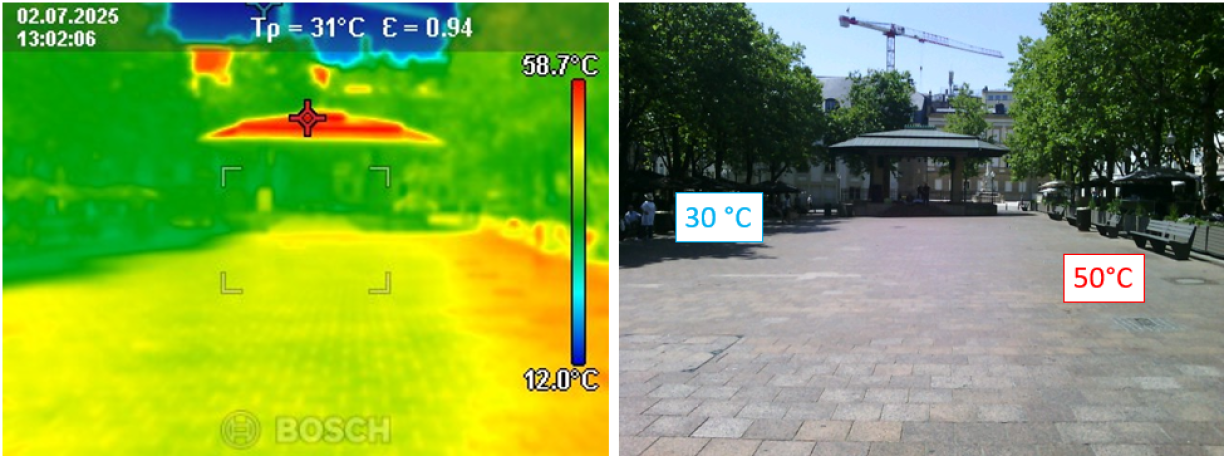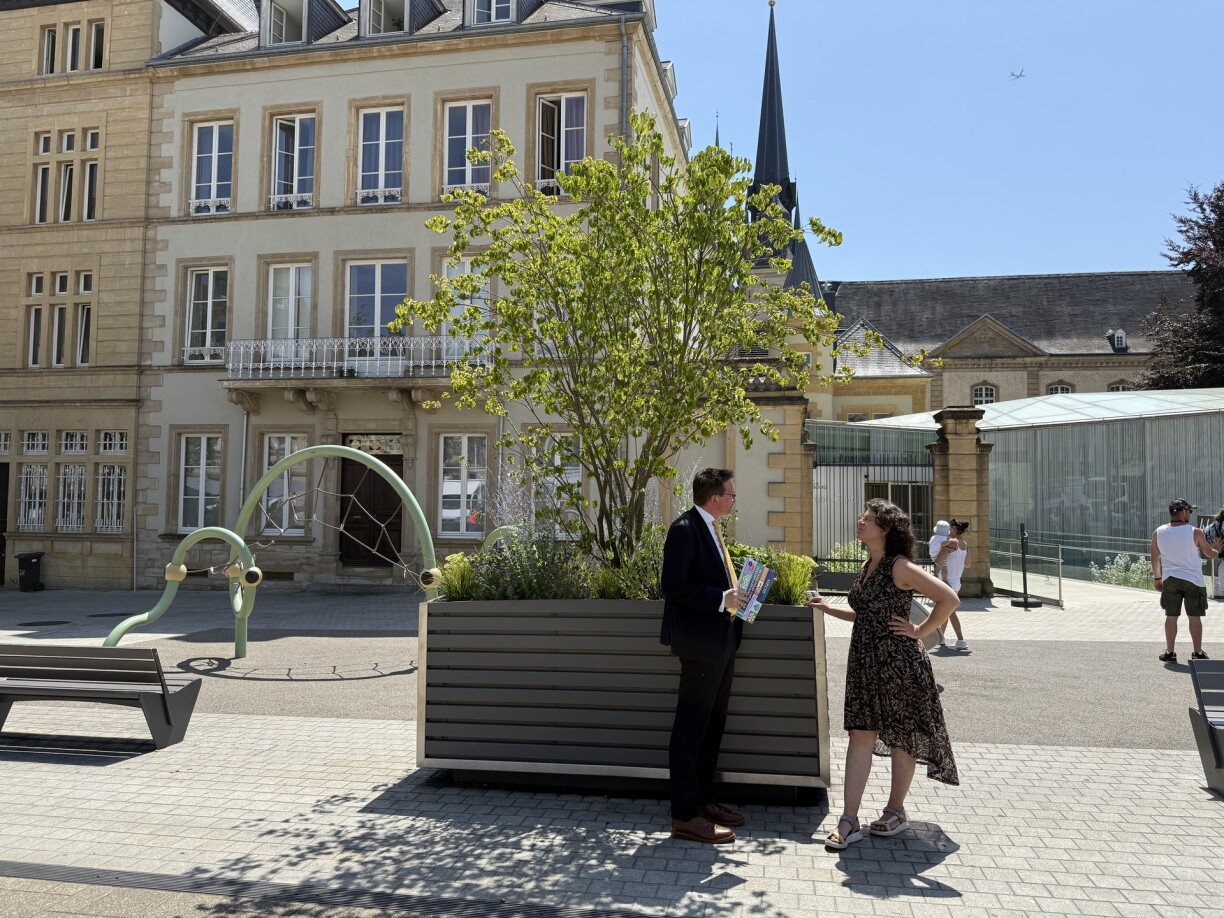
The annual number of days with extreme heat seems to be on the rise, and it is in these conditions that the value of urban green spaces becomes unmistakably clear.
On Place Guillaume, the thermometer read 42°C in direct sunlight on Wednesday. Just one street away, on Place d’Armes, a thermal camera captured 50°C at ground level, while temperatures drop to 30°C in the shade of the trees.
Unsurprisingly, everyone on the square gathered on the shaded side, seeking refuge beneath the canopy.

“With the help of a start-up, we carried out a satellite analysis of the city to identify urban heat islands”, explained Maurice Bauer of the Christian Social People’s Party (CSV), Luxembourg City’s head of environment, in conversation with RTL.
“Pinpointing these hot spots supports our greening strategy. It allows us to take targeted action, adding vegetation where it’s needed most. This not only makes the city visually greener but also helps reduce temperatures in those areas”, the alderman added.
Despite Luxembourg City ranking eighth among the greenest cities globally, temperatures can rise rapidly in certain areas during the summer months. To address this, the municipality set itself an ambitious target: planting 30,000 additional trees by 2030, on top of the 25,000 already present in public spaces.
Another solution are potted trees, already widely used in the Netherlands, as they are being gradually introduced to provide shade and flexibility. At the same time, the municipality is also working to install benches surrounded by greenery.
“We want a sustainable city, one that can respond to heat on days like this”, Bauer says.

“We need to plant trees and vegetation along the streets where people actually walk, so they have shade and cooler conditions”, said Claire Wolff, member of the Ecological Movement (Mouvement Ecologique). Speaking to RTL, she conveyed her belief that the key is to conduct targeted research during heatwaves to identify the city’s most vulnerable heat islands, and then, in a second phase, introduce greenery in those specific areas.
According to Wolff, Place de Paris is among the locations most in need of urgent intervention.